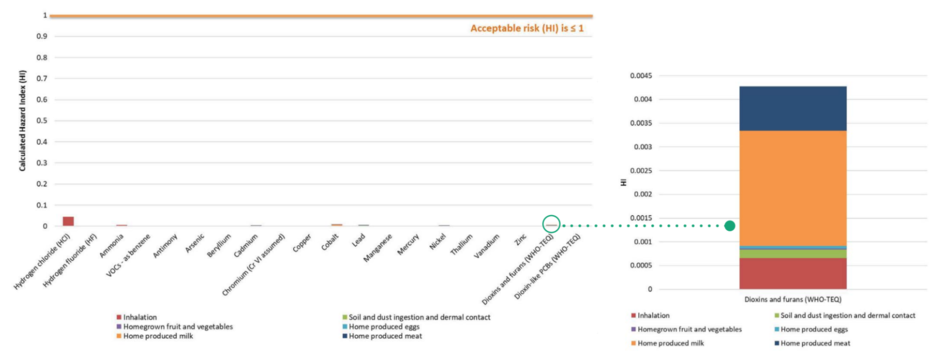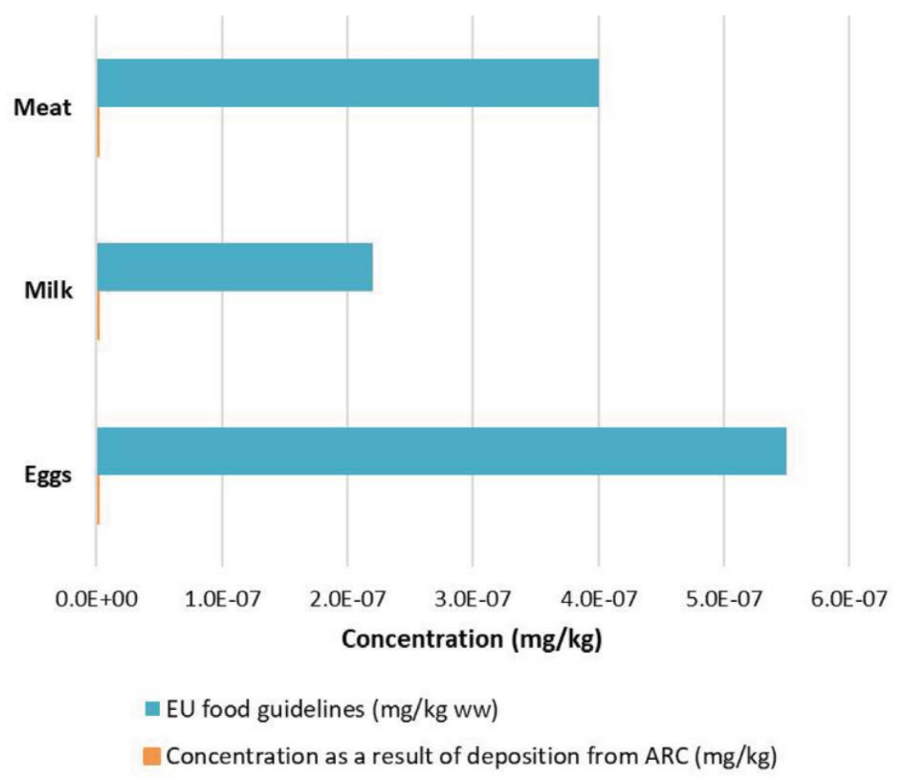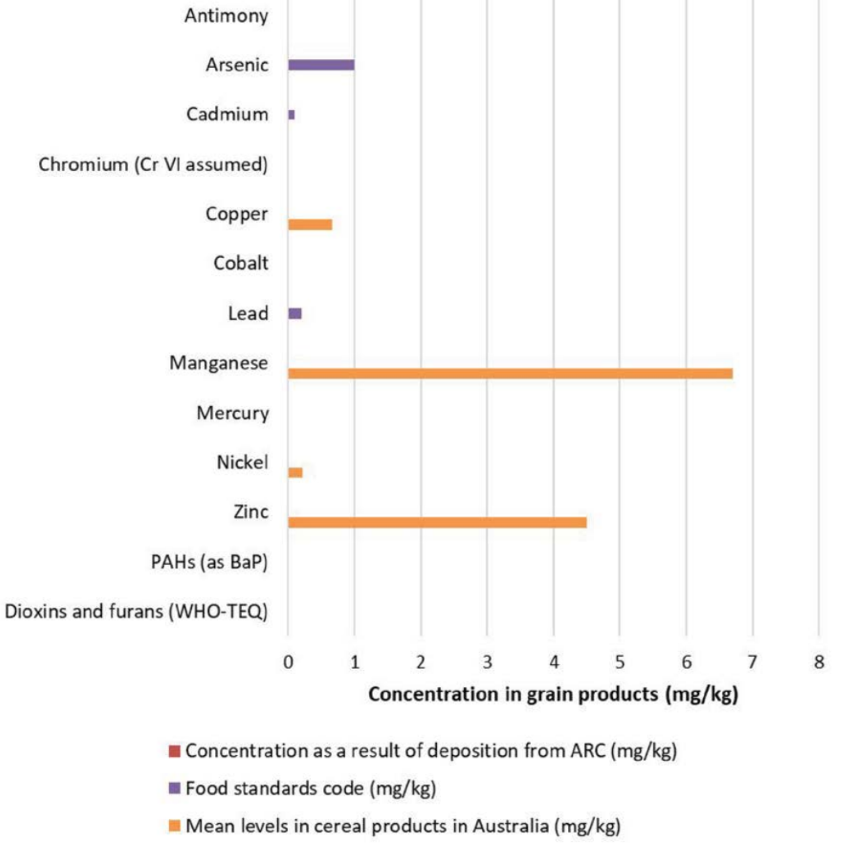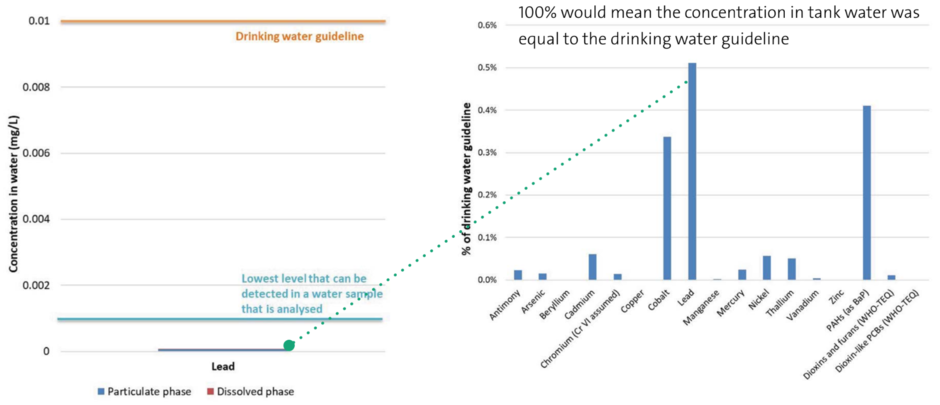The Woodlawn Eco Precinct, where the Advanced Energy Recovery Centre (ARC) is proposed, is situated within an agricultural region. Located within the town of Tarago NSW, the area surrounding the facility includes land used for livestock grazing and a range of crops. Veolia has taken precaution to ensure that thorough modelling and assessments have been undertaken with these considerations in mind.
The independently conducted Human Health Risk Assessment accounts for any impacts to people, livestock and crops. This is particularly important for communities with farming livelihoods, and where strict regulations are imposed by relevant food and health regulators.
Goods produced in the area include, but are not limited to, fruit, vegetables, grain, milk, eggs, and meat. With this context, assessment was undertaken to determine potential impacts on health and quality of produce as a result of air emissions from the ARC.
Watch the video below to hear from Dr Jackie Wright, the independent expert who conducted the Human Health Risk Assessment.
For further details, read our Human Health fact sheet
To read more on the project, view our Community Guide to the EIS
Air emissions
The graph below shows the predicted maximum exposure to air emissions from the ARC.
The limit of 1 represents the maximum acceptable risk, or hazard index (HI), as outlined by the federal Environmental Health Standing Committee (enHealth). The graph shows that the maximum emission concentrations will be well within acceptable limits. A micro-view of the dioxin and furan levels has also been provided.

Crop quality
The assessment has shown that there would be no measurable changes to soil quality as a result of emissions, nor would the project change existing soil conditions or water quality.
The assessment looked at both homegrown food and the commercial sale of crops and produce grown in the region, which are held to strict health standards under the Food Standards Code. Results of this assessment determined that the maximum predicted concentrations from emissions in local produce would be well below limits prescribed by the Food Standards Code. In addition, farms which have organic farming certification would not be impacted by the ARC.
Produce
The graph below shows the European Union's allowed concentration levels, compared to the concentration levels as a result of the ARC.
The blue bars represent the European Union’s maximum (safe) levels in food, which have been adopted for the proposal in the absence of Australian-specific regulation.
The orange represents maximum potential ARC concentration levels, showing that they will be well within safe limits

Grain products
The graph below shows how concentration levels as a result of the ARC (in red) would compare to existing concentrations and Food Standards Code limits. It can be seen that concentration levels from the ARC are so low that they are barely detectable on the graph, and are well below both safe limits and current average concentrations.
The orange bars represent current average concentrations found in cereal products in Australia (before the introduction of the ARC).
The purple bars represent limits prescribed by the Food Standards Code, for the concentrations which have regulation.

Soil quality
The impact on soil quality of the surrounding landscape and farmland was assessed, and it was found that emissions from the ARC will not be detectable in soil.
The assessment was conducted using highly conservative assumptions, such as modelling for a theoretical 70-year scenario (which would surpass the expected lifespan of the facility), and that there would be no top soil, fertiliser, or soil conditioner (which would reduce concentrations of chemicals in surface soil) used in this time span.
Results show that emissions from the ARC will be so negligible that they would not be detectable in soil, and that the maximum predicted chemical levels in the soil will be well below soil guidelines, for both residential and recreational use.
Water quality
The Human Health Risk Assessment also focused on the quality of local drinking and recreational water in Tarago and surrounding areas. Due to the rural location, many properties source their water from rainwater tanks and groundwater. The assessment shows that predicted water concentrations in tanks as a result of emissions from the ARC will be well within drinking water guidelines.
This means that water will be safe for both direct consumption by drinking and for use on farms.
The below graph shows the maximum concentrations in rainwater tanks from ARC emissions as a percentage of the Australian Drinking Water Guideline. The graph shows that concentrations from the ARC are well within safe drinking water limits for human health. In fact, the concentrations are predicted to be so low that they would not even be detectable using the best available analysis technology.

If approved, the facility would be subject to strict regulation by the NSW Environmental Protection Authority, who will set the ARC’s operating licence and will rigorously monitor ongoing operations. The ARC will have continuous emission monitoring systems in place, which will automatically react to flue gas conditions, and the results of which will be closely scrutinised by the Environmental Protection Authority.
Looking for more information?


